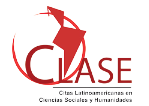The digital information policies adopted in public schools in the northeast
DOI:
https://doi.org/10.5433/1981-8920.2017v22n2p356Keywords:
Information Technology, Mobile Device, Digital Information Policy, Use of cell phone, tablet and notebook, Education in the Brazilian NortheastAbstract
Introduction: Experiences in education with digital technology in the classroom are verified in different Brazilian regions, made possible through the various digital devices, be it the cell phone, tablet or notebook. Objectives: To analyze the digital information policies adopted in the public high schools of the capitals, located in the Northeast region, regarding the adoption of mobile devices for access to information. Methodology: This is descriptive research, with an approach that is characterized as qualitative and quantitative. The procedures adopted refer to the study of multiple cases and the techniques were based on questionnaires with teachers from the nine federative units of the Northeast region. Results: The tablet is one of the least used mobile technologies by teachers. The mobile and the notebook are work tools most used by teachers in class, finding no difficulty in using and the results obtained with these mobile technologies in the classroom, add value in the acquisition of knowledge regarding the classes without the aid of these technologies. Conclusion: Examples of digital information policies were identified in schools in Fortaleza (CE) and João Pessoa (PB), which can serve as a basis for the creation of a digital information policy in other states.Downloads
References
CAPURRO, R.; HJORLAND, B. O conceito de informação. Perspectivas em Ciência da Informação, Belo Horizonte, v.12, n.1, p.148-207, abr. 2007.
CASTELLS, M. A. sociedade em rede. São Paulo: Paz e Terra, 1999.
______. A Sociedade em Rede: a era da informação, economia, sociedade e cultura. 8. ed. Traduzido por Klauss Brandini Gerhardt e Roneide Vanancio Majer. São Paulo: Paz e Terra, 2005.
JARDIM, J. M. Seminário Gestão da Memória. Youtube, 17 jul. 2013. Disponível em: https://www.youtube.com/watch?v=kk-UtycbYJI>. Acesso em: 12 ago. 2016.
PINHEIRO, L.V.R.; LOUREIRO, J.M.M. Traçados e limites da ciência da informação. Ciência da Informação, v.24, n.1, p.42-53, 1995.
LE COADIC, Y. F. A ciência da informação. Tradução de Maria Yêda F. S de Filgueiras Gomes. 2. ed. Brasília, DF: Briquet de Lemos, 2004.
MARCIANO, J. L. P. Bases teóricas para a formulação de políticas de informação, Informação & Sociedade: Estudos, v. 16, n. 2, p.37-50, 2006.
MOURA, A. Geração Móvel: um ambiente de aprendizagem suportado por tecnologias móveis para a Geração Polegar. Disponível em: https://repositorium.sdum.uminho.pt/bitstream/1822/10056/1/Moura%2520%282009% 29%2520Challenges.pdf>. Acesso em 14 de mar. 2017.
UNESCO. Diretrizes de políticas da UNESCO para a aprendizagem móvel. UNESCO. Paris, p. 41. 2014.
WEISACKER, C. F. Von. Aufbau der Physik (Foundation of physics). Munich: Hanser, 1985.
Downloads
Published
How to Cite
Issue
Section
License
A revista se reserva o direito de efetuar, nos originais, alterações de ordem normativa, ortográfica e gramatical, com vistas a manter o padrão culto da língua e a credibilidade do veículo. Respeitará, no entanto, o estilo de escrever dos autores. Alterações, correções ou sugestões de ordem conceitual serão encaminhadas aos autores, quando necessário.
O conteúdo dos textos e a citação e uso de imagens submetidas são de inteira responsabilidade dos autores.
Em todas as citações posteriores, deverá ser consignada a fonte original de publicação, no caso a Informação & Informação.














